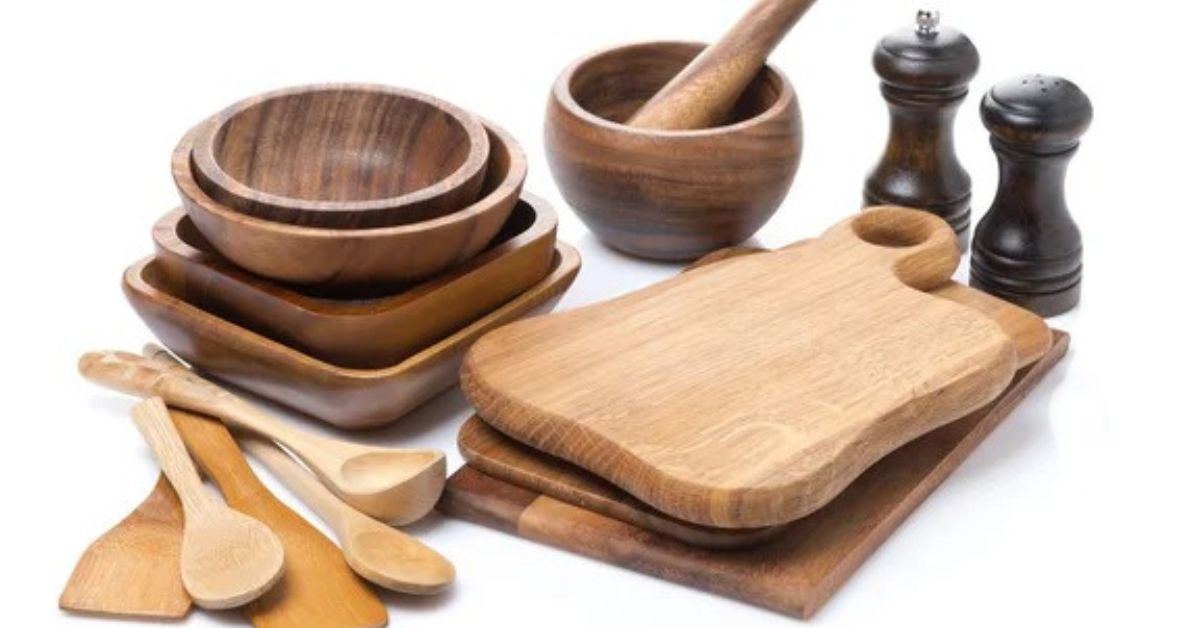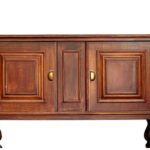Choosing the right kitchen tools goes far beyond convenience and style. For those who prioritize health, sustainability, and long-term value, the focus shifts to selecting non-toxic tools that are not only safe but also durable enough to withstand everyday use. Harmful chemicals like BPA, lead, phthalates, and toxic coatings can leach into your food from poorly made tools, potentially contributing to health issues over time. Fortunately, there’s a wide range of kitchen tools made from natural, food-safe, and high-performance materials that are both environmentally friendly and built to last. Understanding what to look for can make your kitchen a safer place for preparing meals every day.
This article highlights the top non-toxic kitchen tools you should consider adding to your collection, along with why they matter and how they enhance your cooking experience.
RELATED: Top 20 Essential Kitchen Tools Every Cook Needs
Why Choose Non-Toxic Kitchen Tools?
Non-toxic kitchen tools are free from harmful substances that can pose significant health risks. Plastic utensils and coated cookware may contain chemicals like BPA, PFAS, or heavy metals that release into food, especially under heat. Over time, continued exposure to these substances can disrupt hormones, harm organs, and increase the risk of chronic illnesses. Switching to non-toxic alternatives helps reduce these risks and supports cleaner, more natural cooking.
Aside from health benefits, non-toxic materials like stainless steel, silicone, bamboo, and glass tend to be more sustainable and long-lasting. They resist staining, warping, and corrosion, which makes them more cost-effective in the long run. Many non-toxic tools also have antimicrobial properties, making them easier to keep clean and hygienic.
Key Features to Look for in Non-Toxic Tools
When selecting non-toxic kitchen tools, prioritize materials that are naturally inert, resistant to leaching, and approved for food contact. Avoid plastics labeled with recycling codes #3, #6, or #7, which often contain phthalates, styrene, or BPA. Opt for stainless steel (especially 18/8 or 18/10), borosilicate glass, food-grade silicone, natural bamboo, and untreated wood.
Additionally, pay attention to third-party certifications like LFGB, FDA approval, or BPA-free labeling. These assurances indicate that the product has been tested for safety under food-grade standards.
RELATED: Top 15 Kitchen Tools That Make Freezing and Preserving Easy
Best Non-Toxic Kitchen Tools That Are Safe and Durable
1. Stainless Steel Measuring Cups and Spoons
Plastic measuring tools often absorb odors and stain easily. Stainless steel is a non-reactive, non-toxic alternative that doesn’t leach chemicals into your ingredients. It’s highly durable, easy to clean, and remains unaffected by acidic or hot substances. Look for sets with engraved measurement markings to prevent fading over time.
Unlike plastic or aluminum, stainless steel measuring tools can endure heavy daily use, dishwasher cycles, and accidental drops without breaking or warping. They’re also more precise, ensuring you follow recipes accurately. When choosing a set, opt for 18/8 or 18/10 stainless steel, which contains higher levels of nickel and chromium for added resistance to rust and strength.
2. Bamboo Cooking Utensils
Bamboo is one of the best sustainable materials available for kitchen tools. It grows quickly, doesn’t require harmful pesticides, and offers natural antimicrobial properties. Bamboo spoons, spatulas, and tongs are safe to use on all cookware surfaces, including non-stick pans, since they don’t scratch.
Moreover, bamboo utensils are lightweight and resistant to heat and moisture, making them a favorite for everyday cooking. When properly cared for (hand-washed and oiled occasionally), bamboo tools can last for years. They also bring a warm, natural aesthetic to any kitchen.
RELATED: 15 Best Time-Saving Kitchen Gadgets for Busy Families
3. Silicone Baking Mats
Parchment paper and foil are convenient but not always eco-friendly or free of toxins. Silicone baking mats offer a non-stick, reusable, and BPA-free solution. Made from food-grade silicone, these mats replace single-use liners and eliminate the need for oils and sprays that may contain artificial additives.
Silicone baking mats are oven-safe, typically up to 480°F, and can be used for everything from roasting vegetables to baking cookies. They’re easy to clean and store flat or rolled. Make sure to choose mats labeled as LFGB- or FDA-approved to ensure they meet food safety standards.
4. Glass Mixing Bowls
Mixing bowls made from glass are ideal for both prep and storage. Unlike plastic, glass doesn’t stain, absorb odors, or leach chemicals. It also provides visibility, so you can monitor ingredients as you mix. Borosilicate glass is particularly durable and resistant to thermal shock, allowing transitions from fridge to microwave or oven without cracking.
Most glass mixing bowls come in nesting sets, saving space and providing multiple size options. They’re perfect for marinating, mixing doughs, or serving salads, and they can double as elegant storage containers with fitted lids.
5. Cast Iron Skillets
Well-seasoned cast iron skillets are a traditional and highly non-toxic option for cooking. They provide even heat distribution and retention, making them excellent for searing, baking, and sautéing. Cast iron doesn’t contain chemical coatings and adds a small amount of dietary iron to your food.
Proper care is essential to keep cast iron in top condition. Regular seasoning (applying a thin layer of oil and heating it) helps maintain a natural non-stick surface and prevents rust. While heavy, cast iron is virtually indestructible and can last for generations with correct use.
RELATED: Kitchen Tools That Make Cooking with Kids Fun and Easy
6. Wooden Cutting Boards
Plastic cutting boards can harbor bacteria in deep grooves and release microplastics over time. Wooden cutting boards, especially those made from maple, walnut, or teak, are naturally antibacterial and resistant to knife marks. They’re non-toxic, attractive, and gentle on knife edges.
Wooden boards require hand-washing and occasional oiling with food-grade mineral oil or beeswax to prevent drying and cracking. Many come in reversible designs, allowing separate sides for meats and produce. With good maintenance, a wooden board becomes a beautiful and long-lasting kitchen staple.
7. Stainless Steel Food Storage Containers
Swapping plastic containers for stainless steel versions can greatly reduce your exposure to toxins, especially when storing hot or acidic foods. Stainless steel containers are safe, non-reactive, and long-lasting. Many come with leak-proof silicone lids that make them perfect for lunches or leftovers.
They are also lightweight, stackable, and often dishwasher-safe. Look for BPA-free and phthalate-free seals to ensure full safety. Stainless steel is an excellent insulator, which helps keep food at the right temperature longer.
8. Ceramic-Coated Non-Stick Pans
Traditional non-stick pans may release toxic fumes at high temperatures due to coatings like Teflon. Ceramic-coated pans offer a healthier alternative. These pans are made with a sand-based coating that provides a non-stick surface without toxic chemicals like PFAS, PFOA, or PTFE.
Ceramic cookware is ideal for low-to-medium heat cooking and requires minimal oil. They’re easy to clean and often available in attractive designs. Be cautious to avoid overheating or using metal utensils, as this can degrade the coating over time.
9. Glass Food Storage Jars
For pantry storage, glass jars are unbeatable. They keep ingredients fresh without introducing any harmful substances. Airtight lids prevent moisture and pests from getting in, while the transparent design lets you easily monitor contents.
Glass jars work well for storing dry goods like grains, nuts, and flour. They can also be used for homemade sauces, ferments, or overnight oats. Unlike plastic containers, glass jars don’t warp, stain, or retain odors. They’re safe for both the fridge and freezer (with proper precautions).
10. Natural Fiber Dish Brushes and Sponges
Cleaning tools can also introduce toxins into your kitchen. Conventional sponges often harbor bacteria and break down into microplastics. Natural fiber brushes made from coconut husk, sisal, or bamboo offer a compostable and chemical-free cleaning alternative.
These brushes are effective for scrubbing dishes and even stubborn cookware. Some models come with replaceable heads, reducing waste. Combined with a stainless steel or ceramic soap dispenser, natural dish brushes contribute to a low-tox, eco-conscious kitchen routine.
Benefits of Using Non-Toxic Kitchen Tools
Using non-toxic kitchen tools offers peace of mind, knowing that your food preparation isn’t being compromised by invisible contaminants. It also reduces the number of disposable or low-quality products that end up in landfills. Non-toxic materials like cast iron and stainless steel can last decades when maintained properly, promoting sustainability through long-term use.
There’s also a noticeable improvement in food flavor and presentation when using high-quality tools. Stainless steel won’t react with acidic ingredients like tomatoes or vinegar. Glass bowls and containers don’t trap smells or colors. These advantages create a healthier and more pleasant cooking environment overall.
Conclusion
Creating a non-toxic kitchen doesn’t mean compromising on performance or aesthetic appeal. From bamboo utensils to stainless steel containers and cast iron pans, today’s market offers a wide array of tools that are as safe and durable as they are stylish and efficient. Making the switch to non-toxic kitchen tools ensures that you and your family are cooking with products that support both personal health and environmental sustainability. Investing in these tools not only protects your meals from hidden chemicals but also enhances your overall cooking experience for years to come.









